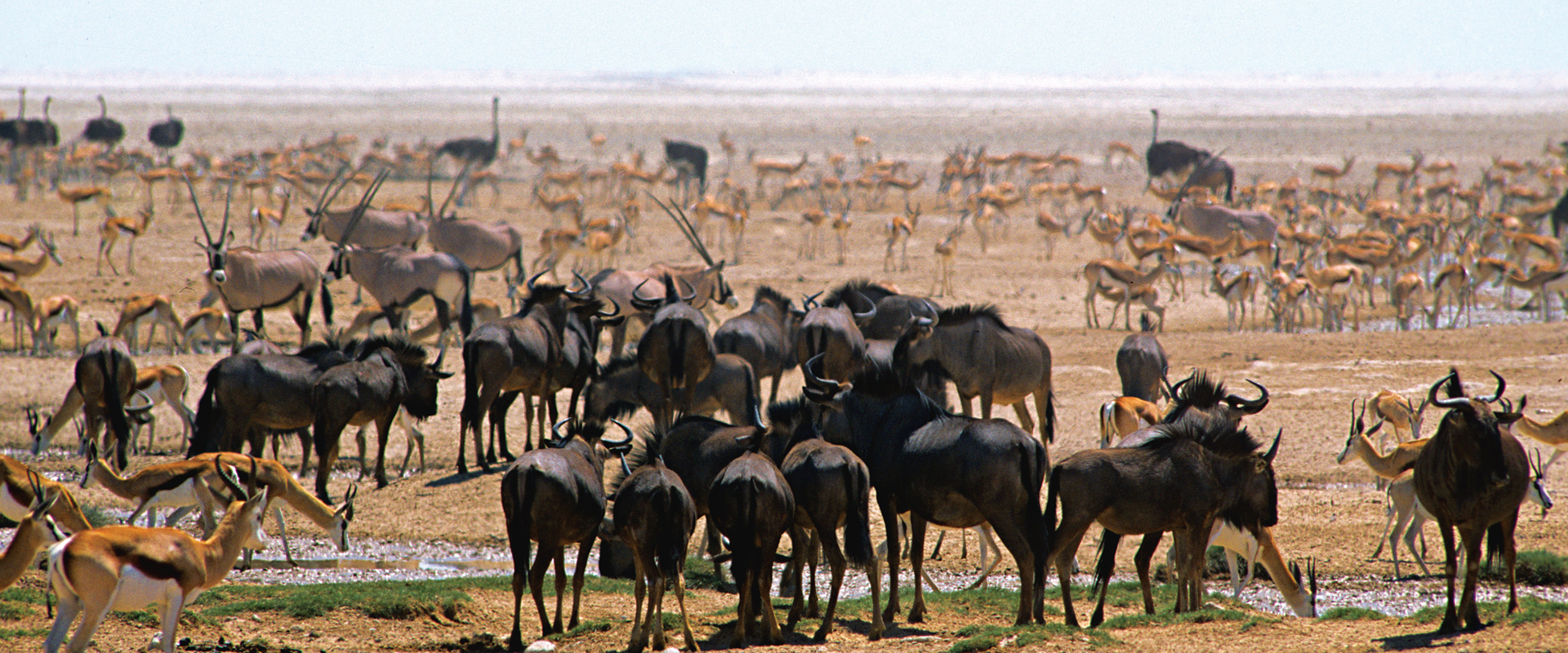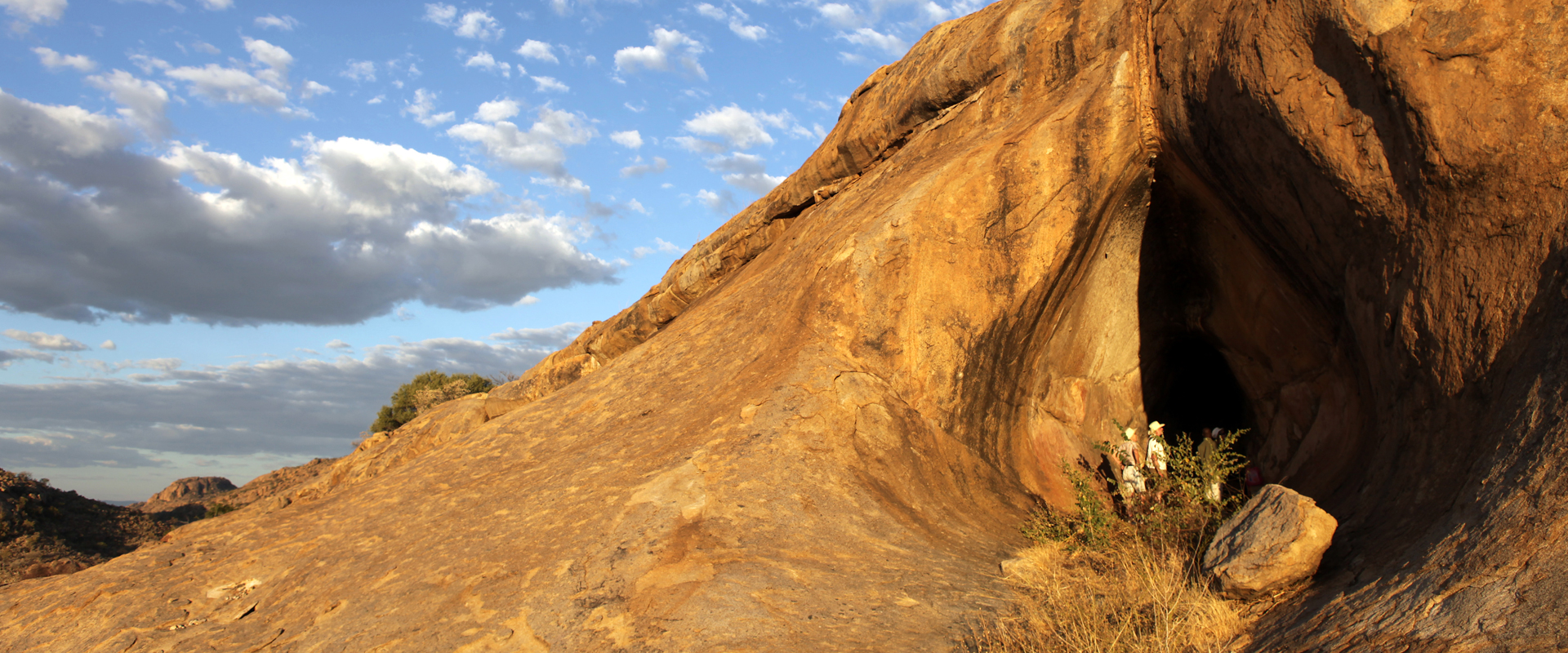
Waterhole pecking order
January 27, 2017
Facts on the caves of Namibia
January 31, 2017Text and photographs Luise Hoffmann
Since you probably came to Namibia to bask in the sun, the sight of a few clouds in the sky may make you nervous, and the prospect of grey days of pouring rain may dampen your spirits
B ut don’t be alarmed! Namibia is the most arid country south of the Sahara. The skies are cloudy for 100 days a year at most, in drought years even less. Rain showers are usually short and strong, the clouds soon dissipate and the sun shines again on a sparkling, refreshed countryside.
For Namibians rain is a constant theme of discussion throughout the rainy season, which lasts from about October to April. Wherever people meet, the first questions will be: Have you had any rain? How much did it rain? When do you think it will rain? Many people, not only farmers, have a rain gauge in their garden to keep track of the precious liquid.
As Nordic people have many different terms to denote the condition of snow, or as desert dwellers have many words for the state of sand, so Namibians have specific terms for the intensity of rain. If each drop leaves a separate mark in the dust, it is described as stofnat (dust wet), and when a sturdy shower obliterates animal and vehicle tracks, it is called spoordood (track dead). The scent of just a few drops of rain on the desiccated dusty land is incredibly wonderful and invigorating, causing humans as well as animals to jump for joy.
As the harbingers of rain, clouds therefore attract every Namibian’s attention. From October to April, as the day heats up, you will find them craning their necks towards the east or north-east for the slightest speck of cloud in the clear blue sky. Around 11:00 in the morning, a wisp of cloud may suddenly hover over a nearby mountain range. It may disappear, but before long a few more small clouds will come sailing along. Unless the wind turns or becomes too strong, the clouds will grow larger but will still be confined to the area above the mountain. By early afternoon, a tall sparkling mass of white clouds with grey underbellies may have accumulated and hopes will be raised.
But more often than not, the wind turns west and the clouds flatten and melt away, or are blown far towards the eastern horizon to offload their burden over some more fortunate area.
In the frequent years of drought, as the searing days drag on, people spend evenings sitting on the veranda or in some cooler spot in the yard, scanning the eastern sky for any sign of sheet lightning, indicating that at least there is still some hope for rain tomorrow or the next day.
White clouds sailing in the sky enhance landscape photography, and cloud shadows moving over the vast vistas of Namibia add depth and interest to the view. Indeed, Namibia’s spectacular sunsets would not be possible without clouds reflecting light and colours from various angles and distances. If you can drag yourself out of bed early enough, Namibian sunrises can be just as wonderful and the light during the first two hours of sunshine is as valuable for photographers as the famous golden hour before sunset.
Namibia’s vast open skies provide excellent opportunities to watch storm clouds gathering, piling up into tall towers of glistening white with grey or dark-blue bellies. Soon the first thunderbolts flash and rumble. All of a sudden the sky is overcast, dark banks of cloud are blown across the plains and rain comes pouring down in grey streaks and curtains. Usually the downpour stops as abruptly as it started. The sun comes through and often a rainbow or even a double rainbow can be seen.
Water gathers in every small depression, forming little rivulets, the streams soon filling the many dry river courses with roiling brown masses of water and debris. Such rivers may flood, even though the actual storm might have been far away.
Rain washes off dust and grime. Many plants have adapted to the arid climate by folding or curling up their leaves. After a shower, these leaves unfold or unfurl, and almost instantly the land looks much greener, with the cool fresh air energising birds, animals and people alike.
So do not despair – clouds over Namibia embody the prospect of a spectacular natural drama and our vast sky provides you with a ringside view.
This article was first published in the Flamingo April 2011 issue.







